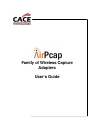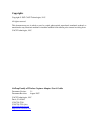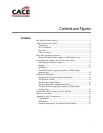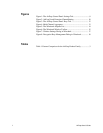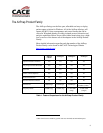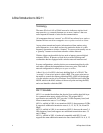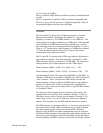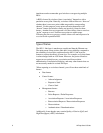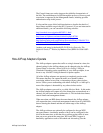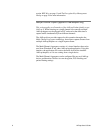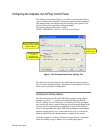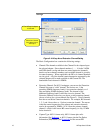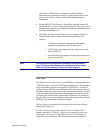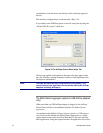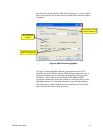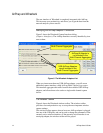
AirPcap User’s Guide 5
18, 24, 36, 48 and 54 Mbps.
802.11i, ratified in 2004, defines an enhanced security mechanism based
on AES.
802.11n, expected to be ratified in 2009, is backward compatible with
802.11a, b, and g, and will operate at 2.4 GHz and optionally 5 GHz. It
can potentially support data rates up to 600 Mbps.
Channels
802.11b and 802.11g divide the 2.4 GHz spectrum into 13 channels,
beginning with channel 1 and ending with channel 13. The center
frequency of channel 1 is 2,412MHz, channel 2 is 2,417MHz, etc. The
center frequencies of adjacent channels are 5 MHz apart. The bandwidth
of each channel is 20 MHz which means that channels may “overlap.”
The commonly-used non-overlapping channels are channels 1, 6, and 13.
There is a 14
th
channel whose center frequency is 12MHz above channel
13. These frequency bands are referred to as channels and stations
communicate using a particular channel.
802.11a and 802.11n operate in the 5 GHz range which is divided into a
large number of channels. The center frequency of channel 0 is 5,000
MHz, the center frequency of channel 1 is 5,005 MHz. The formula for
relating channels (n) to center frequencies in the 5 GHz range is:
Center frequency (MHz) = 5,000 + 5*n, where n = 0, …, 199,
Center frequency (MHz) = 5,000 – 5*(256 – n), where n = 240, …, 255.
Note that channels 240 to 255 range from 4,920 MHz to 4,995 MHz. As
with the 2.4 GHz band, each channel is 20 MHz wide. 802.11n allows for
“wide” channels – that is, two adjacent 20 Mhz bands (note that the
channel numbers of the two adjancent 20 MHz bands are not adjacent)
can be used “side-by-side” in order to be backward-compatible with
802.11a, b, and g, or they can be combined into a single 40 MHz channel
in “Greenfield” mode.
The actual use of the channels, however, depends on the country. For
example,in the USA, the FCC allows channels 1 through 11 in the 2.4
GHz band, whereas most of Europe can use channels 1 through 13. No
matter where you are, you can use AirPcap to listen on any supported
channel. The regulations for the 5GHz band are much more complex.
Each BSS operates on a particular channel, i.e., the access point and all of
the wireless clients within a BSS communicate over a common channel.
The same channel may be used by more than one BSS. When this
happens, and if the BSSs are within communication range of each other,
the different BSSs compete for the bandwidth of the channel, and this can
reduce the overall throughput of the interfering BSSs. On the other hand,
selecting different channels for nearby access points will mitigate channel



